Official portraits of French presidents.

As soon as technology made multiple reproduction of images possible (in fact, since the invention of the negative around 1840 by Talbot) it has been customary to take an "official" photo at the beginning of a president's term of office. posted in all French town halls and in certain other public places. Adolphe Thiers was the first president to benefit from this image reproduction technique, in black and white at the time.
These official presidential portraits were taken by well-known photographers who listened either to the personality of the President to be photographed, or to the instructions of his communications department. It is interesting to analyse these portraits by placing them in context and considering that each of the photos was exactly what the client wanted. In fact, when you're called the Elysée, you have the the means to have a photo redone if it is not exactly what was expected.
It is amusing to note that the pose of Adolphe Thiers in 1871 (his hand resting on a book symbolising the constitution) is regularly found in subsequent presidential portraits: Armand Fallières in 1906, Raymond Poincaré in 1913 (but without the book), Alexandre Millerand in 1920, Gaston Doumergue in 1924, Paul Doumer in 1931, Albert Lebrun in 1932 and, more recently, Charles de Gaulle (1959) and Georges Pompidou (1969).
The recurring symbols only began to change very recently, in 1974 with Valéry Giscard D'Estaing. Previously, a book was often placed on the table (the constitution), with a bookcase in the background (knowledge), the Legion of Honour or other decorations.
Valéry Giscard D'Estaing also brought about a break in posture: the haughty attitude was replaced by a smiling face and a direct gaze. In addition, a French flag appears for the first time. This is perhaps justified by the fact that presidential photos have long been in black and white: blue-white-red in black and white just doesn't look the same. Since then, the French flag has always featured in official photos, except with Miterrand, who preferred a return to the front of the library.
Giscard d'Estaing also changed his attire: he wore a suit and tie, stripped of all presidential attributes and decorations. It was the suit of someone you might meet in the street. This novelty would later be adopted by all his successors.
This portrait of Giscard D'Estaing marks the beginning of official photos that are carefully thought out and designed to convey a particular message. It's easy to imagine a set of specifications, given to the photographer and designed by the communication department.
It is then worth analysing these images to determine what message you wanted to get across or what impression you wanted to convey. The first elements to consider may be :
The distance.
When the President is depicted in full or as an American portrait (cut off at mid-thigh), this creates a distance between the viewer and the president.
A head-and-shoulders portrait, on the other hand, is a sign of closeness, indicating that the person is not inaccessible.The low-angle shot.
This term is used when the point of view (the camera) is relatively low in relation to the subject.
The low angle is used to make the person being photographed more majestic. It gives the impression that the viewer is inferior to the person in the photo.
The President's posture, the gaze.
Is the attitude haughty or welcoming ? Is the gaze directed at the viewer or elsewhere ? All these elements influence the impression given by the person of the president.
The flags.
Flags are strong and immediately identifiable symbols. In this case, it could be the French flag and/or the European flag. The presence or absence of these elements, their size, but also their position in relation to the person of the President (on the same plane, behind) is significant.
Other symbolic elements.
The background is becoming increasingly important: before 1950, presidents were often photographed in front of a neutral background (there were exceptions). After 1950, the place where the photo is taken is chosen carefully: library, gardens, office, etc.
The objects and furniture visible in the décor also have a meaning. Their presence is no accident.
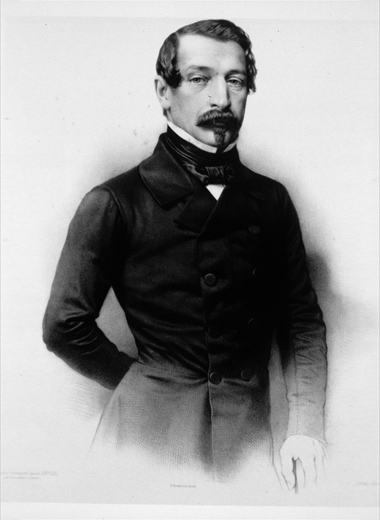
Louis-Napoléon Bonaparte
Exercising from 1848 à 1852
Third French Republic.

Adolphe Thiers
Exercising from 1871 à 1873
Third French Republic

Patrice de Mac-Mahon
Exercising from 1873 à 1879
Third French Republic
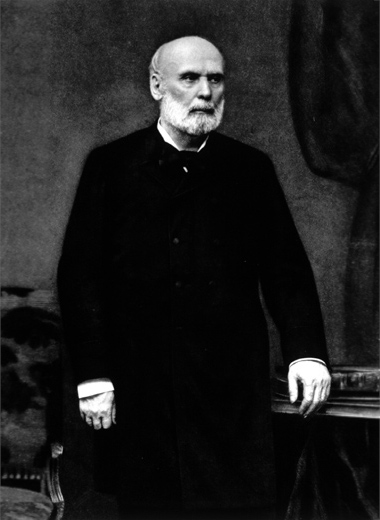
Jules Grévy
Exercising from 1879 à 1887
Third French Republic

Marie-François Sadi Carnot
Exercising from 1887 à 1894
Third French Republic

Jean Casimir-Périer
Exercising from 1894 à 1895
Third French Republic

Félix Faure
Exercising from 1895 à 1899
Third French Republic
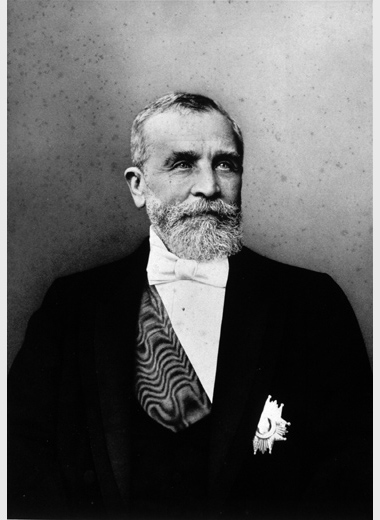
Émile Loubet
Exercising from 1899 à 1906
Third French Republic
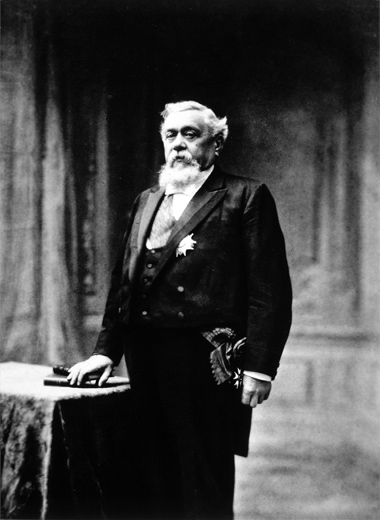
Armand Fallières
Exercising from 1906 à 1913
Third French Republic

Raymond Poincaré
Exercising from 1913 à 1920
Third French Republic"
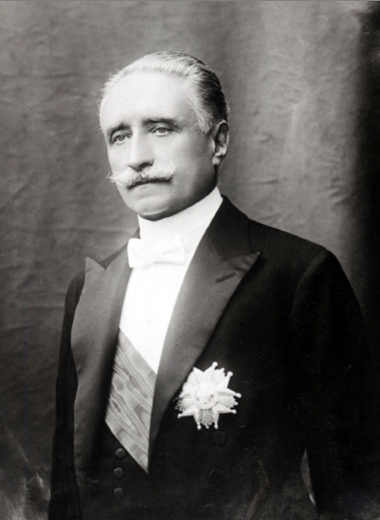
Paul Deschanel
Exercising from 1920 à 1920
Third French Republic

Alexandre Millerand
Exercising from 1920 à 1924
Third French Republic

Gaston Doumergue
Exercising from 1924 à 1931
Third French Republic
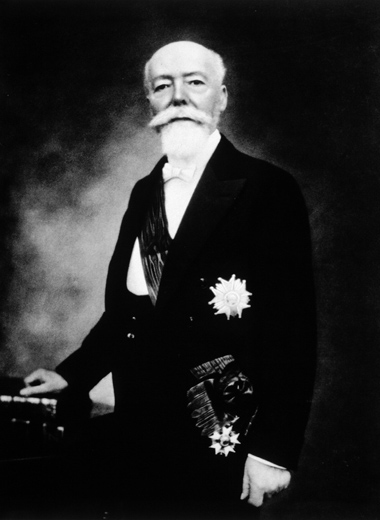
Paul Doumer
Exercising from 1931 à 1932
Third French Republic

Albert Lebrun
Exercising from 1932 à 1940
Third French Republic

Vincent Auriol
Exercising from 1947 à 1953
Fourth french republic
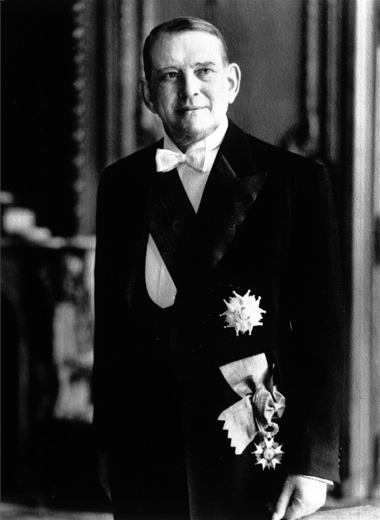
René Coty
Exercising from 1953 à 1959
Fourth french republic
Charles de Gaulle.
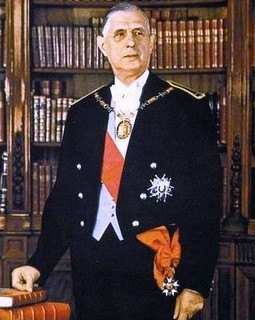
Charles de Gaulle - Exercising from 1959 à 1969 - Fifth French Republic.
Photographer : Jean-Marie Marcel.
Very haughty, photographed in an American shot (cut off mid-thigh) and slightly low-angle, the general has adopted the pose of many of his predecessors: standing, right hand resting on a book. The shoulder pads and decorations give the picture a military feel.
The construction of this image clearly places the President above the ordinary citizen.
For the first time, the photo is in colour (technology is evolving).
Georges Pompidou.

Georges Pompidou - Exercising from 1969 à 1974 - Fifth French Republic.
Photographer : François Pages.
Virtually the same photo as its predecessor: same pose, same framing. The only slight difference is the gaze, which here is directed to the left.
Valéry Giscard d'Estaing (1974-1981).
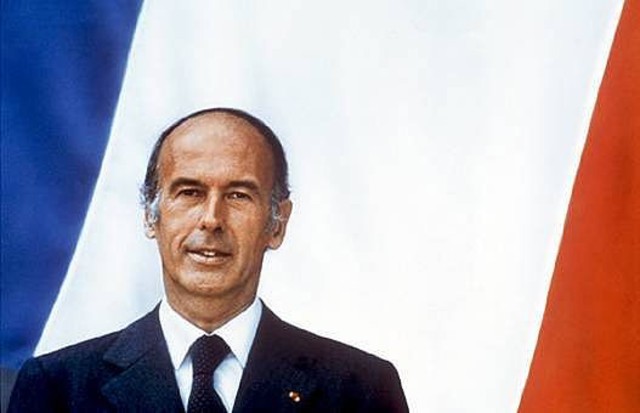
Valéry Giscard d'Estaing - Exercising from 1974 à 1981
Fifth French Republic.
Photographer : Jacques-Henri Lartigue.
A complete break with previous presidential portraits. The codes and symbols have been changed, the will is not the same: The aim now is to show that he is close to the French people, to abolish distance and the haughty side of the office.
- It's a head-and-shoulders portrait, which suggests a certain closeness between the viewer and the president.
- The background is a French flag waving in the wind. This adds colour and dynamism to the image.
- The suit is simple and devoid of the usual presidential attributes (decoration, Legion of Honour, etc). It's the suit of someone you might meet in the street.
- The posture is inviting: the low-angle shots of his predecessors are a thing of the past. The face is smiling and the gaze is directed at the viewer. All details that suggest a President who is close to the French people. The look in the camera would be repeated by all his successors right up to the present day.
- Finally, the photo is oriented horizontally, which is also a first.
François Mitterrand.
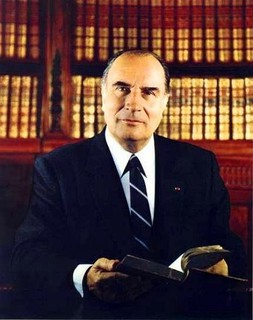
François Mitterrand - Exercising from 1981 à 1995 - Fifth French Republic.
Photographer : Gisèle Freund.
The library has returned, but to suggest culture rather than knowledge. The President is reading a book (I've heard it's Montaigne's "Essays", but I don't think you can tell from the picture). This will be the only presidential photo in which the President is seated.
The choice of photographer is not innocent either: Gisèle Freund has taken portraits of many famous writers: Jean-Paul Sartre, André Malraux, Marguerite Yourcenar, Samuel Beckett and others.
Jacques Chirac (1995-2007).

Jacques Chirac - Exercising from 1995 à 2007 - Fifth French Republic.
Photographer : Bettina Rheims.
The first official photo was taken outdoors, in the gardens of the Élysée Palace. The pose was relaxed, the setting sunny and pleasant, and Jacques Chirac showed his closeness to the French people.
The French flag is discreet but it's there.
Nicolas Sarkozy (2007-2012).
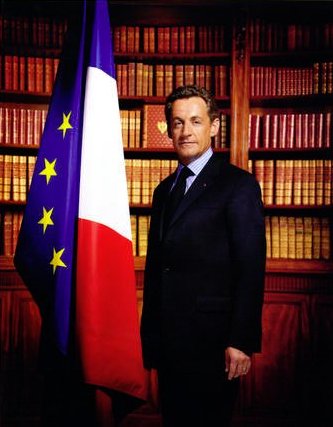
Nicolas Sarkozy - Exercising from 2007 à 2012 - Fifth French Republic.
Photographer : Philippe Warrin.
Again in front of the library of the Grand Palais, but the table, which is natural in this place, has been replaced by two flags, which look a little artificial here. The flags, a French one and a European one, are large and even take up more space in the image than the silhouette of the President, which is rather curious. In the photo of Giscard d'Estaing the flag was also omnipresent but it was in the background, whereas in this photo it is in the same plane as the President.
This is the first time that Europe has featured in official photos of French presidents.
A fan of 'celebrity' communication, Sarkozy has chosen Philippe Warrin, a photographer known in the world of showbiz (Le Loft, Star Académie). The computer retouching that is common in celebrity photos can be seen here: unnatural colour of the wood in the bookcase, very pronounced vignetting, exaggerated straightening of the verticals, even over-correction.
François Hollande (2012-2017).
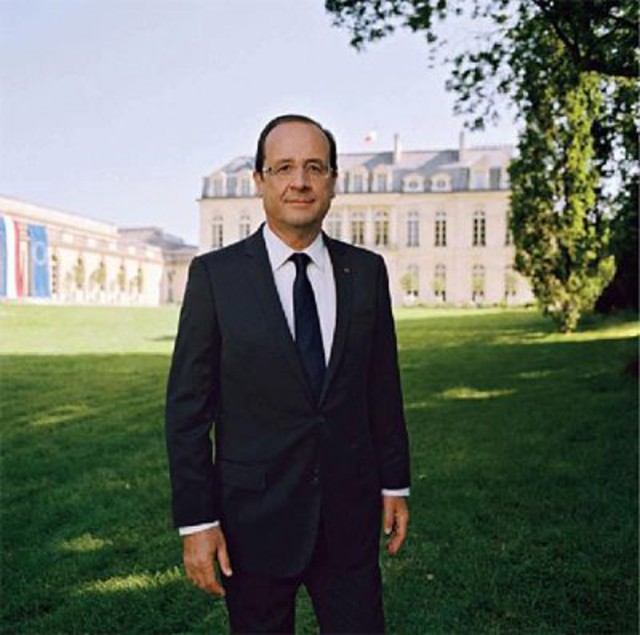
François Hollande - Exercising from 2012 à 2017 - Fifth French Republic.
Photographer : Raymond Depardon.
Outdoors and in the sun, like Jacques Chirac, but the pose is more suggestive of a candid shot (which we know is not the case, of course).
The French and European flags are still there.
The square format is a novelty, perhaps suggested by Raymond Depardon.
Emmanuel Macron.
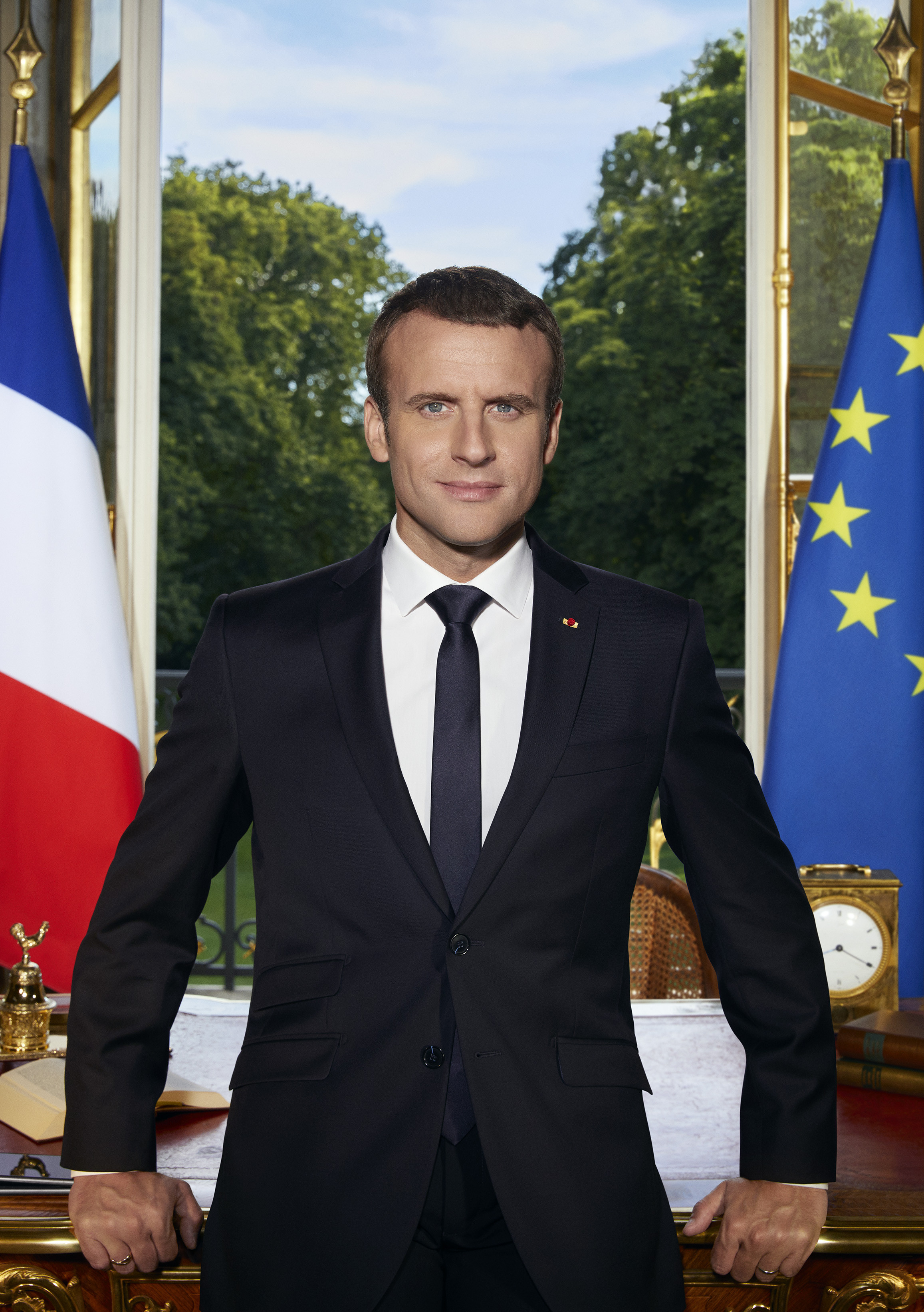
Emmanuel Macron - Exercising frompuis 2017 - Fifth French Republic.
Photographer : Soizig de la Moissonière.
The photo is perfectly symmetrical, with the President in the central position, which is the place that painters reserved for the monarch in the pictorial tradition.
The president is standing, leaning against his desk, looking straight at the viewer. The attitude is intended to be welcoming, but also suggests hard work and a determination to succeed, whatever the difficulties. In the background, a window opens onto the gardens of the Élysée Palace.
Various objects have been placed on the desk, each with its own special meaning :
- Two smartphones, symbols of modernism.
- Books: General De Gaulle's "Mémoire de guerre", Standhal's "Le rouge et le noir", and André Gide's "Les nourritures terrestres".
- A clock, symbolising the President's desire to remain in control of the calendar.
The French and European flags surround the President and are themselves arranged symmetrically. The left-hand side of a photo is generally associated with the past, while the right-hand side represents the future. This gives the placement of the flags a very clear meaning in the President's mind.
See also :
- A video showing the preparations for the official portrait. We see the President himself arranging the objects on his desk. We should bear in mind that this video may have been staged.


If you liked this page, share it on your favorite network :